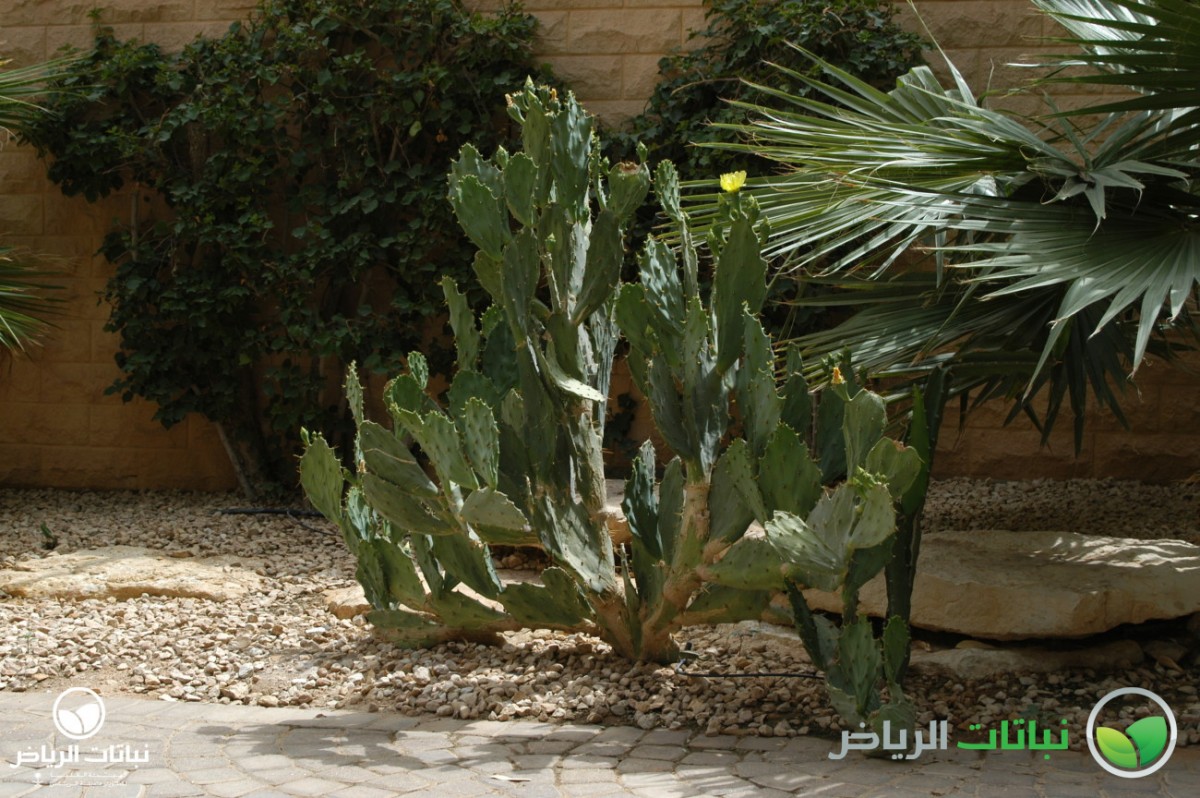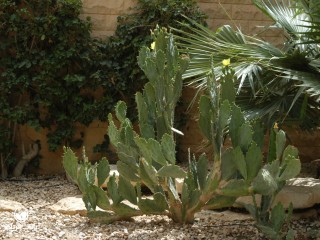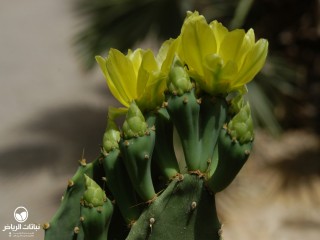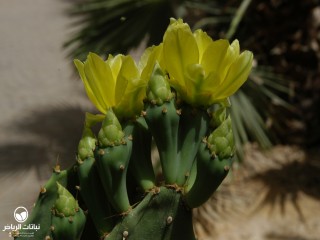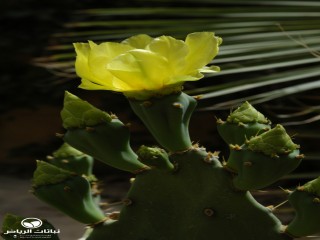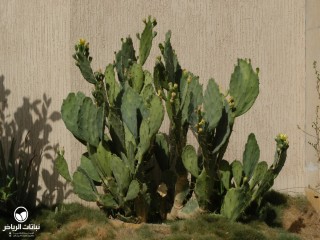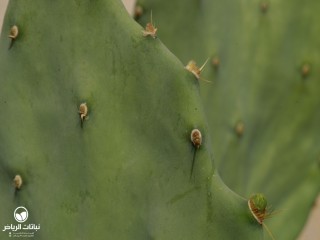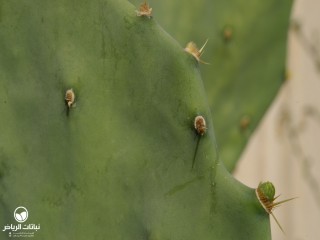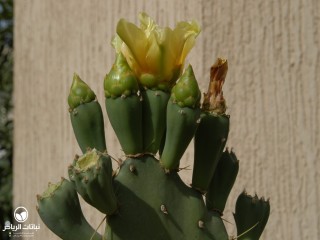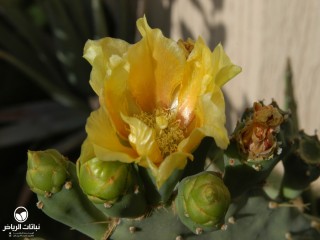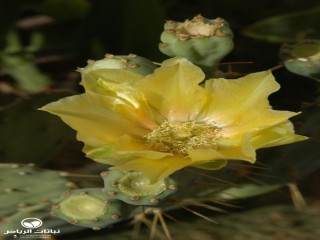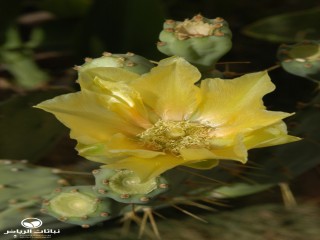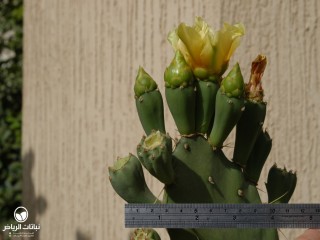Riyadh Plants
Indian Fig, Prickly Pear, sabbar
Although its species name means ‘Indian Fig’, this cactus is much better known as Prickly Pear, or sabbar in Arabic. It may grow like a shrub. It consists of paddle-shaped segments which eventually become round, forming a solid branch. Both trunk and branches do not build solid wood, but rather a spongy tissue which is robust enough to bear the heavy, fleshy crown. Its origin is allegedly Mexico. It is one of the few New World cacti growing in Saudi Arabia, and is often seen on farms in Arriyadh. In spring, beautiful, bright-yellow flowers appear at the upper edges of the segments. After fertilisation by numerous kinds of insects, the base becomes swollen to develop into a delicious-tasting, egg-shaped fruit. Green at first, this turns yellow, orange and finally deep purple when fully ripe. The segments may or may not feature the thorns that so many cacti are known for. Thorny varieties are set around fields as a living fence, while bare cultivars are grown for their fruit as hedges or specimens. They are often planted ornamentally as an impenetrable ground cover. All Prickly Pear fruits are armed with tiny, apparently harmless areoles that bear bristly glochids. These penetrate human skin instantly causing a nasty itching for hours or days, since they are difficult to remove. Segments easily root if buried to one third in well-drained soil. Apart from the water permeability, the soil can have any properties; and it can have some salinity. There are no problems with heat, or full or even reflected sun.
